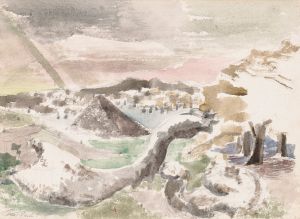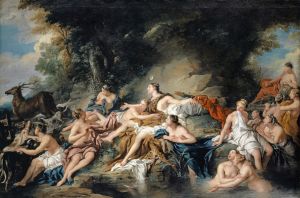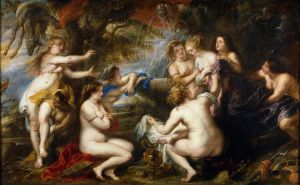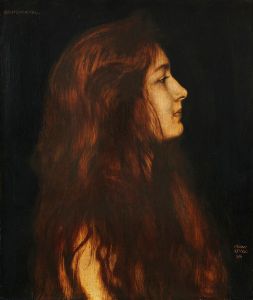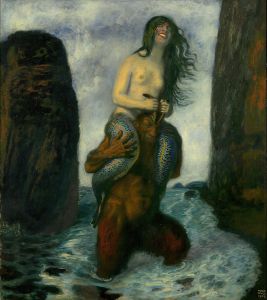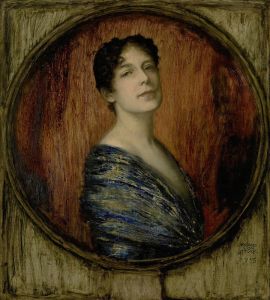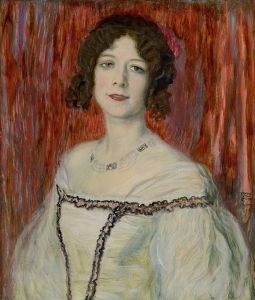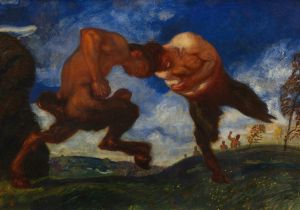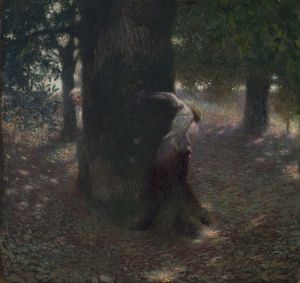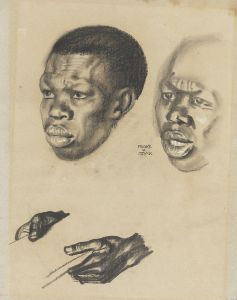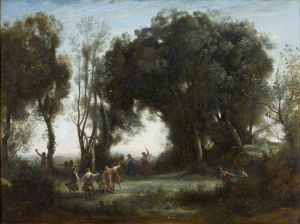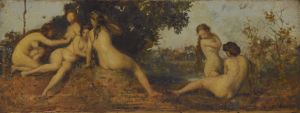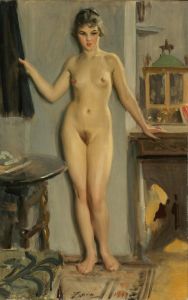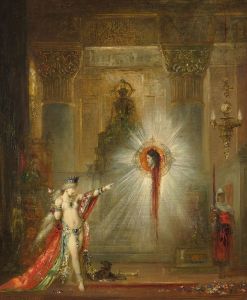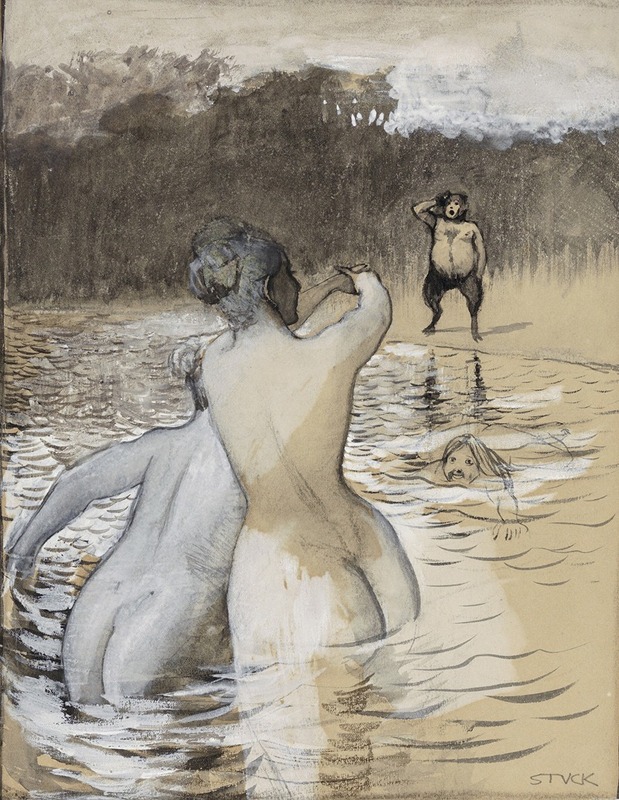
Faun und badende Nixen
A hand-painted replica of Franz von Stuck’s masterpiece Faun und badende Nixen, meticulously crafted by professional artists to capture the true essence of the original. Each piece is created with museum-quality canvas and rare mineral pigments, carefully painted by experienced artists with delicate brushstrokes and rich, layered colors to perfectly recreate the texture of the original artwork. Unlike machine-printed reproductions, this hand-painted version brings the painting to life, infused with the artist’s emotions and skill in every stroke. Whether for personal collection or home decoration, it instantly elevates the artistic atmosphere of any space.
Franz von Stuck was a prominent German painter, sculptor, and architect, associated with the Symbolist movement. He was born on February 23, 1863, in Tettenweis, Bavaria, and became one of the founding members of the Munich Secession, an art movement that sought to break away from the traditional academic art styles of the time. Stuck's work is characterized by its mythological themes, dramatic use of light and shadow, and a distinctive style that often combined elements of Art Nouveau and Symbolism.
"Faun und badende Nixen" (Faun and Bathing Nymphs) is one of Stuck's notable works, reflecting his fascination with mythological subjects and the human form. The painting depicts a faun, a mythological creature that is half-human and half-goat, observing a group of nymphs as they bathe. Nymphs, in Greek mythology, are minor deities associated with nature, often depicted as beautiful young women. The scene is set in a lush, natural environment, typical of the idyllic landscapes often found in Stuck's work.
Stuck's use of light in "Faun und badende Nixen" is particularly striking. He employs chiaroscuro, a technique that contrasts light and dark, to create a sense of depth and to highlight the figures in the painting. The faun, often a symbol of rustic nature and primal instincts, is rendered with a sense of curiosity and mischief, while the nymphs are portrayed with an ethereal beauty, emphasizing their divine nature.
The painting reflects Stuck's interest in the interplay between the human and the divine, the natural and the supernatural. This theme is recurrent in his body of work, where he often explored the boundaries between reality and myth. Stuck's portrayal of mythological subjects was not merely an artistic choice but also a reflection of the broader cultural interest in mythology and symbolism during the late 19th and early 20th centuries.
"Faun und badende Nixen" is also indicative of Stuck's skill in composition and his ability to convey narrative through visual art. The arrangement of the figures, the use of natural elements, and the dynamic poses all contribute to a sense of movement and storytelling within the painting. Stuck's attention to detail and his ability to capture the subtleties of human expression and form are evident in this work.
Franz von Stuck's influence extended beyond his paintings. As a teacher at the Academy of Fine Arts in Munich, he mentored several students who would go on to become significant artists in their own right, including Paul Klee and Wassily Kandinsky. His impact on the art world was profound, and his works continue to be studied and admired for their technical mastery and rich symbolism.
"Faun und badende Nixen" remains a testament to Stuck's artistic vision and his ability to blend mythological themes with a unique stylistic approach. The painting is a reflection of the cultural and artistic milieu of its time, capturing the imagination and the complex interplay of themes that defined the Symbolist movement.





